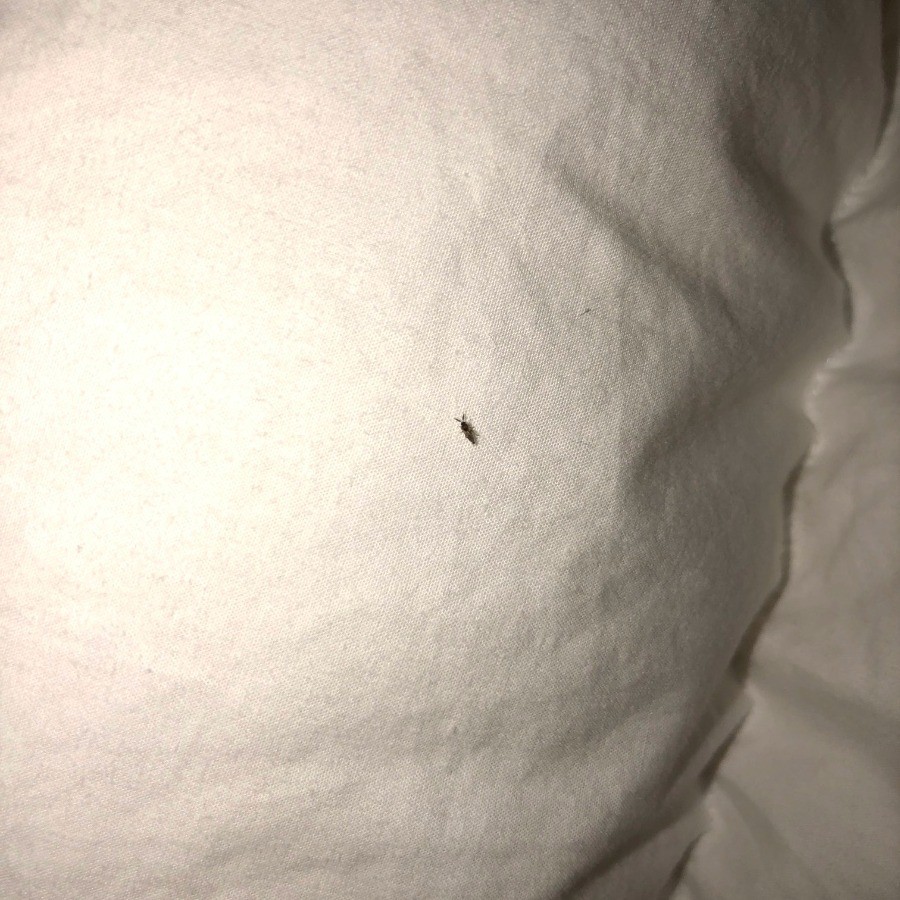Table Of Content

Their name comes from the delicate webs they create when constructing their homes, not because they are related to spiders. It is shocking how many ants are in the world, with the number at a staggering 20 quadrillion. You will find them in various parts of your home, from the exterior walls to inside the house. You will likely find them hovering over trash and open fruits in your kitchen.
Fleas, Springtails, and Fungus Gnats: What small bugs live in your home?
However, you can swat or vacuum flies you find indoors or use flypaper to reduce their numbers. To prevent further infestations, caulk all gaps around vents, electrical outlets, doors, windows, and baseboards. Flesh flies are identified by their dark gray to black bodies and sometimes have a greenish or bluish metallic sheen.
What's that smell? How to keep stink bugs out of your home - WCNC.com
What's that smell? How to keep stink bugs out of your home.
Posted: Thu, 14 Oct 2021 07:00:00 GMT [source]
Fruit Fly
Tiny house bugs can not only be terrifying, but can cause ultimate damage to your furniture, and your health. They can be identified easily on beds and mattresses as small bugs with flattened oval bodies and tiny heads. These shield-shaped insects are generally safe for people to handle.
What Are These Small, Tiny Brown Bugs?
As you can see, they are slightly more elongated than drugstore beetles. As you might guess, they are called like this because they like to hang around biscuits and other foodstuffs. Pill bugs cluster in dark, moist corners, under furniture, near water sources, and under flowerpots or rotting wooden boards. Even in clean, modern homes, they are often found in basements, bathrooms, and laundry rooms. Basements, attics, and crawl spaces are the best areas for little black bugs to live and breed.
Drain Flies (Psychodidae)
However, once indoors, crickets may damage clothing, drapes, or wall coverings—thanks to stains from feces or by their feeding. Since no chemical solutions exist to eliminate grain mites, thoroughly cleaning the space they inhabit is a resident’s best bet for removing them. On flat surfaces, residents can use a hot, soapy rag to clean the area. A vacuum cleaner with an attachment for small crevices can reach tight corners or hard-to-clean areas where grain mites may settle. Keeping dry goods in tightly sealed containers will prevent grain mites from returning.
Also, check their shape and distinct physical characteristics, such as hard shells. This way, you can assess what they are and how you can quickly get rid of the bug infestation, without having to call professional help. Crane flies are easily identifiable due to their slender, pointed abdomen, large wings, V-shaped groove on their thorax, and long spindly legs. If your infestation is large or persistent, consider treating your home’s foundation with a residual insecticide.
To reduce phorid fly numbers, you can use sticky traps until they disappear for good. To kill drain flies and larvae, pour a pot of boiling water down the drain. Then put a cup of baking soda in the drain, followed by a large cup of equal parts white vinegar and water. Lastly, pour a pot of boiling water down the drain to kill flies, white maggots, and larvae. Cluster flies are difficult to get rid of due to their large numbers.
What are snow fleas?
They lay eggs in moist organic debris or potting soil, feeding on the roots of plants. If you find fungus gnats in your home, don’t stress yourself out. Fungus gnats do not cause structural damage, eat plant leaves, or bite. Even though they are relatively harmless, fungus gnats are considered a nuisance by most homeowners that do not want to have to deal with their presence indoors. They live within the top 2-3 inches of soil within a potted houseplant and will remain relatively close to the plan during their lifespan.
Solved! What to Do When You Have Moths in the Closet
Remove grass, leaves, weeds, and any other plants that might attract clover mites. These pests do not bite, transmit human disease, or cause structural damage to homes and office buildings. They’re not as common as other pests because they usually don’t seek out humanmade structures for shelter. Soil, fungi, decaying logs, and under the bark of trees are ideal for springtail breeding. Snow fleas just another name for springtails, which are not fleas at all. One of the ways that you can occasionally see springtails is while you’re shoveling snow.
They have a characteristic erratic flying behavior, make irritating buzzing noises, and have excellent eyesight—which is why they are difficult to swat. Silverfish are tiny bugs identified by their silvery scales, oval-shaped, tapered bodies, and movements resembling a fish swimming in water. Centipedes are reddish-brown bugs that have lots of legs along their flattened bodies. Despite the name, not all centipedes have over a hundred legs. Suppose you spot crawly critters scampering over a countertop, furniture, or carpet.

However, they can be active throughout the year inside your home. This is why it’s so crucial to get rid of fungus gnats for good; otherwise, getting rid of swarms of gnats is exceedingly challenging. Vinegar, especially acetic acid, is a killer pest control tool. It can repel the most common nuisances and can even kill the weaker insects.
One of the differences is that rice weevils are smaller, and their reddish-brown bodies have orange markings. On the other hand, maize weevils are larger than grain or rice weevils. Grain beetle eradication is similar to killing all types of panty bugs. These are typically cereals, pasta, chocolate, nuts, and cake mixes.
Please read on to find out how to identify types of small house bugs. The easiest way to identify bed bugs is to look for signs of their activity. This includes itchy skin spots, rusty or reddish stains on sheets or mattresses, and musty-smelling bed bug feces that resemble tiny black dots. A drain fly is a furry flying bug with a gray or brown-colored body and wings covered in long, thin hairs. A characteristic habit of drain flies is how they fold their wings over when at rest.
The small black bugs can range in size from tiny fleas, ticks, bed bugs, and gnats to larger bugs like carpet beetles, black ants, and pantry weevils. Homeowners may also identify little tiny black bugs in the house or bedroom as carpet beetles, which can lay over 100 eggs at one time. While the adult beetles feed on pollen and plants, both the young beetles and larvae will feed on silk, wool, leather, pet hair, and other natural fibers. Fungus gnats are small, black bugs with wings commonly seen hovering around potted house plants.
They are dangerous because they feed on blood, like bedbugs and mosquitos. They love plush places like carpets and bedding with abundant skin cells. They are infamous for spreading diseases and contaminating food, making it necessary to eliminate them instantly. You can tell that roaches have infested your home when you see their black droppings, skin traces, and musty smells.
Other types of black ants, like carpenter ants, damage wooden structures by burying into dead wood. Signs of a cockroach infestation include droppings that look like black pepper, a musty odor, and molted skins they leave behind. Getting rid of cockroaches is vital because they spread disease and contaminate food. A house bug’s identifying features are the length and shape of the body, its number of legs, and whether it has wings. The shimmery and slithering silverfish is one bug you never want to see indoors. This pest will feast on fabric, paper, glue, and cardboard boxes.

No comments:
Post a Comment